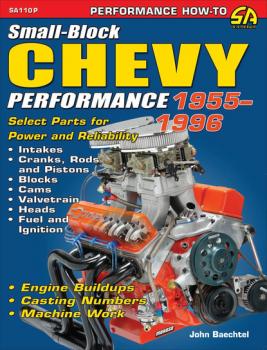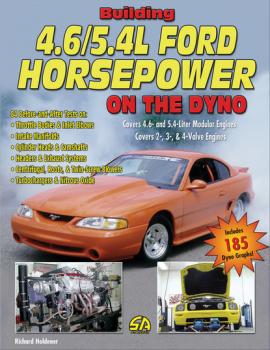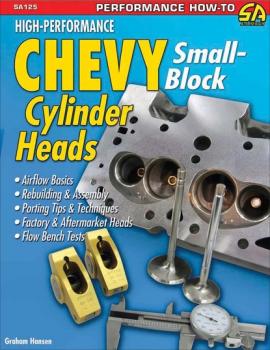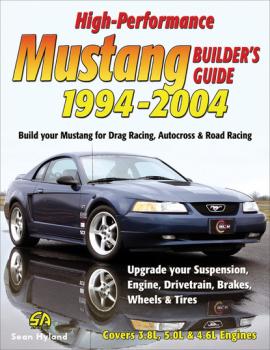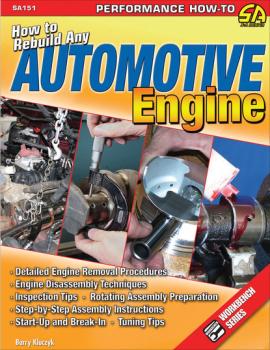MREADZ.COM - много разных книг на любой вкус
Скачивание или чтение онлайн электронных книг.How to Autocross
The photos in this edition are black and white.<p>Autocross is the most accessible form of motorsports for the sports car enthusiast. With many clubs sanctioning events, it is possible to attend an event nearly every weekend in many areas. The low-risk format allows drivers to participate without needing to extensively modify their car for safety. Autocross events are held all across the United States and Canada. These events allow the average person to participate with their typical street cars. Because of the nature of the sport, drivers of many different skill levels and goals participate together. Casual drivers out for a good time and serious competitors with loads of talent can run in the same event and all have fun. <P><I>How to Autocross</I> covers everything you need to know to get behind the wheel and start autocrossing. It covers basic modifications such as tire pressures, alignment, and dampers, to more advanced modifications that go beyond the stock classes. Because autocross is a test of driver skill, there is a heavy emphasis on driving and car control, with coverage on accelerating, braking, weight transfer, shifting, corners, slaloms, and finding that perfect line. Information is also included on car classes, driver schools, data logging, how events are typically run, and how to find events in your area. <P>If you would like to start racing on a budget, and want to have a blast on weekends showing off your car and your driving skills, <I>How to Autocross</I> is a great guide to get you started!
How to Rebuild Honda B-Series Engines
The photos in this edition are black and white.</p><p>The first book of its kind, <i>How to Rebuild the Honda B-Series Engine</i> shows exactly how to rebuild the ever-popular Honda B-series engine. The book explains variations between the different B-series designations and elaborates upon the features that make this engine family such a tremendous and reliable design. Honda B-series engines are some of the most popular for enthusiasts to swap, and they came in many popular Honda and Acura models over the years, including the Civic, Integra, Accord, Prelude, CRX, del Sol, and even the CR-V. <p>In this special Workbench book, author Jason Siu uses more than 600 photos, charts, and illustrations to give simple step-by-step instructions on disassembly, cleaning, machining tips, pre-assembly fitting, and final assembly. This book gives considerations for both stock and performance rebuilds. It also guides you through both the easy and tricky procedures, showing you how to rebuild your engine and ensure it is working perfectly. Dealing with considerations for all B-series engines-foreign and domestic, VTEC and non-VTEC-the book also illustrates many of the wildly vast performance components, accessories, and upgrades available for B-series engines. <p>As with all Workbench titles, this book details and highlights special components, tools, chemicals, and other accessories needed to get the job done right, the first time. Appendices are packed full of valuable reference information, and the book includes a Work-Along-Sheet to help you record vital statistics and measurements along the way. You'll even find tips that will help you save money without compromising top-notch results.
Small-Block Chevy Performance: 1955-1996
The photos in this edition are black and white.<p>The small-block Chevy is widely known as the most popular engine of all time. Produced in staggering numbers and boasting huge aftermarket support, small blocks are the engine of choice for a large segment of the performance community. <p>Originally published as two separate volumes, <i>Small Block Chevy Performance 1955-1996</i> now covers the latest information on all Gen I and Gen II Chevy small blocks, this time in one volume. This book continues to be the best power source book for small-block Chevy. The detailed text and photos deliver the best solutions for making your engine perform. Extensive chapters explain proven techniques for preparing blocks, crankshafts, connecting rods, pistons, cylinder heads, and much more. Other chapters include popular ignition, carburetor, camshaft, and valvetrain tips and tricks.
How to Drag Race
The photos in this edition are black and white.<p>From race registration to the finish line and everything in between, <i>How to Drag Race</i> explains all the steps for successful drag racing, so the aspiring drag racer can easily setup his or her car, launch off the line, and quickly run at every racetrack. It offers the first comprehensive description of every aspect of drag racing, including car set up, driving techniques, class information, and getting active in racing at the local level. <p>Author Kevin McKenna, editor at National DRAGSTER, NHRA's weekly news magazine, uses 300 color photos to show you what to expect your first time out, how to set your street car or race car up for consistency and speed, and driving techniques for racers at all levels. He discusses tires, safety equipment, driving aids, such as line-locks and delay boxes, choosing a class, and advanced racer math. Special sections detail how to maximize your setup and strategy bracket racing success. If you have ever thought it would be fun to give drag racing a try, this book is for you. If you have ever thought it would be fun to give drag racing a try, this book is for you.
Building 4.6/5.4L Ford Horsepower on the Dyno
The photos in this edition are black and white.<p>The 4.6- and 5.4-liter modular Ford engines are finally catching up with the legendary 5.0L in terms of aftermarket support and performance parts availability. Having a lot of parts to choose from is great for the enthusiast, but it can also make it harder to figure out what parts and modifications will work best. Building 4.6/5.4L Ford Horsepower on the Dyno takes the guesswork out of modification and parts selection by showing you the types of horsepower and torque gains expected by each modification. <p>Author Richard Holdener uses over 340 photos and 185 back-to-back dyno graphs to show you which parts increase horsepower and torque, and which parts don't deliver on their promises. Unlike sources that only give you peak numbers and gains, <i>Building 4.6/5.4L Ford Horsepower on the Dyno</i> includes complete before-and-after dyno graphs, so you can see where in the RPM range these parts make (or lose) the most horsepower and torque. Holdener covers upgrades for 2-, 3-, and 4-valve modular engines, with chapters on throttle bodies and inlet elbows, intake manifolds, cylinder heads, camshafts, nitrous oxide, supercharging, turbocharging, headers, exhaust systems, and complete engine buildups.
High Performance Chevy Small-Block Cylinder Heads
The photos in this edition are black and white.<p>Any professional performance engine builder will likely tell you the most powerful and important component in an engine are cylinder heads. If you can afford to invest serious money in one component for a street engine, in most cases it should be a set of cylinder heads. While the small-block Chevy engine has been well-chronicled, specific in-depth information on this important component has been more elusive. This book shows you how to choose the best cylinder head for your application. It covers both Gen I and Gen II small-block Chevy versions, occasionally touching on the Gen III and Gen IV production versions. This book taps into some of the best small-block Chevy cylinder head resources this country has to offer with a combination of insight and best estimates, because much of what we know about port design and airflow management falls under the category of art rather than science. <p><i>High-Performance Chevy Small-Block Cylinder Heads</i> is designed exactly like its predecessor, <i>High-Performance Chevy Small-Block Cams & Valvetrains</i>, in that it starts with the basics and works into more in-depth concepts and variables in an attempt to uncover all those subtle nuances that make up the small-block Chevy. It features airflow basics, extensive flow bench tests (using the Superflow 600 bench), information on production and aftermarket heads, rebuilding and assembly, and basic porting techniques.
High-Performance Mustang Builder's Guide: 1994-2004
The photos in this edition are black and white.<p>Before the introduction of the 05+ models, 1994-'04 Mustangs represented a high-water mark for late- model Mustang enthusiasts. From the '94-'95s with the 5.0L, through the '96-'04 models with the 2- and 4-valve 4.6Ls, to the Bullitt, Mach 1, and factory supercharged '03-'04 Cobras – never before has such a range of highly modifiable performance cars been available. These Mustangs were great performers straight from the factory, but they can be even better with the right combination of performance parts. Regardless of which '94-'04 Mustang you start with, the availability of high-performance parts is impressive. You can build your Mustang for drag racing, road racing, or improved street performance – and <i>High- Performance Mustang Builder's Guide 1994-2004</i> will show you how! Author Sean Hyland uses over 300 photos to explain how to upgrade your Mustang's engine, suspension, chassis, transmission, rear end, brakes, and body. There's even a special chapter on getting active in various forms of organized racing.
How to Rebuild Any Automotive Engine
The photos in this edition are black and white.<p>There comes a time in every automobile's life when the engine just doesn't perform as it should anymore. It may be burning oil, it may be leaking, the compression may be so low that it only starts on cold days, or maybe it just isn't very efficient anymore. When all of this happens, you have to decide whether to just dump the car and replace it, or add some new life to your old car by rebuilding the engine. <p>Rebuilding the engine in any used car, much less a classic, seems like a much more attractive option when you can save a lot of money by doing it yourself. Sometimes the savings are the difference between keeping your car or letting it go. If you want to keep you car running strong and lasting for years, this is the book for you. <p>A part of CarTech's Workbench Series, <i>How to Rebuild Any Automotive Engine</i> covers the basics of any engine rebuild in more than 400 photos of step-by-step instruction. Subjects covered include preparation and tool requirements, engine removal, engine disassembly, machine work and clean-up, short-block assembly, final engine assembly, installation, start-up, and break in. Also visited are the options of purchasing crate engines, remanufactured engines, and performance upgrades. This book applies to all cars on the road that feature an internal combustion engine. Spend a little on this book and save hundreds of dollars down the road.
Fir and Empire
The disappearance of China’s naturally occurring forests is one of the most significant environmental shifts in the country’s history, one often blamed on imperial demand for lumber. China’s early modern forest history is typically viewed as a centuries-long process of environmental decline, culminating in a nineteenth-century social and ecological crisis. Pushing back against this narrative of deforestation, Ian Miller charts the rise of timber plantations between about 1000 and 1700, when natural forests were replaced with anthropogenic ones. Miller demonstrates that this form of forest management generally rested on private ownership under relatively distant state oversight and taxation. He further draws on in-depth case studies of shipbuilding and imperial logging to argue that this novel landscape was not created through simple extractive pressures, but by attempts to incorporate institutional and ecological complexity into a unified imperial state.Miller uses the emergence of anthropogenic forests in south China to rethink both temporal and spatial frameworks for Chinese history and the nature of Chinese empire. Because dominant European forestry models do not neatly overlap with the non-Western world, China’s history is often left out of global conversations about them; Miller’s work rectifies this omission and suggests that in some ways, China’s forest system may have worked better than the more familiar European institutions.
The Great Quake Debate
In the first half of the twentieth century, when seismology was still in in its infancy, renowned geologist Bailey Willis faced off with fellow high-profile scientist Robert T. Hill in a debate with life-or-death consequences for the millions of people migrating west. Their conflict centered on a consequential question: Is southern California earthquake country?These entwined biographies of Hill and Willis offer a lively, accessible account of the ways that politics and financial interests influenced the development of earthquake science. During this period of debate, severe quakes in Santa Barbara (1925) and Long Beach (1933) caused scores of deaths and a significant amount of damage, offering turning points for scientific knowledge and mainstreaming the idea of earthquake safety. The Great Quake Debate sheds light on enduring questions surrounding the environmental hazards of our dynamic planet. What challenges face scientists bearing bad news in the public arena? How do we balance risk and the need to sustain communities and cities? And how well has California come to grips with its many faults?


